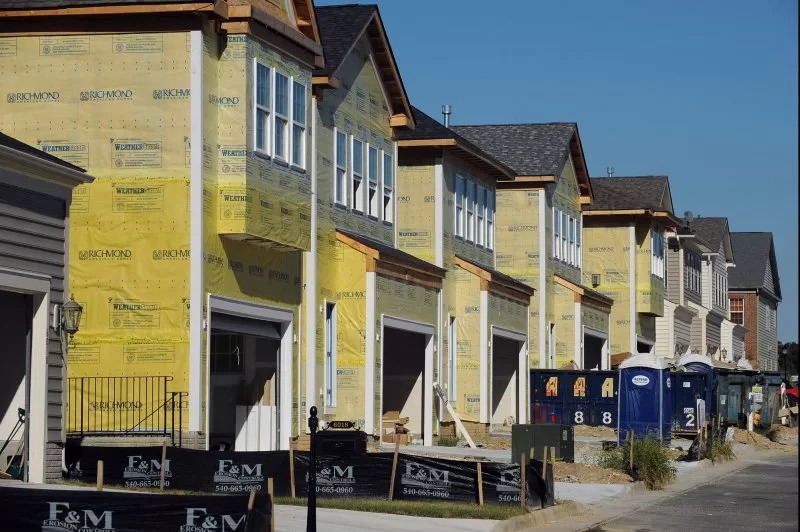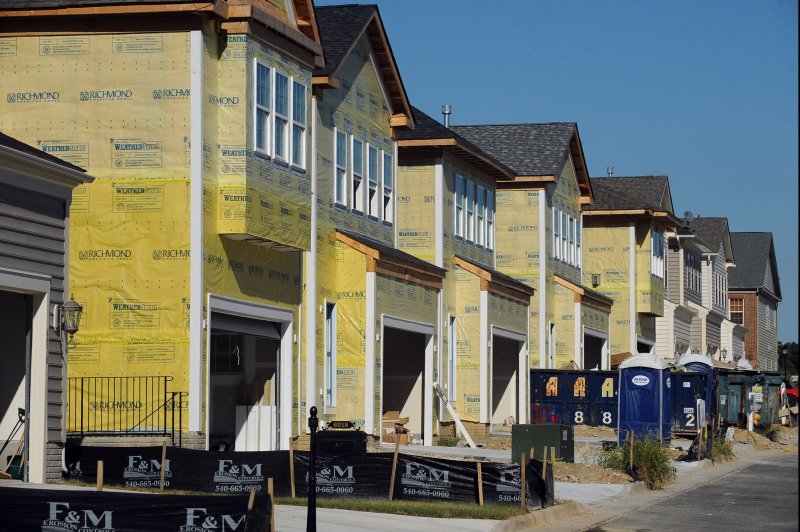1 of 3 | There are more housing under construction now than at any point in fifty years with some 60,000 multi-family units complete in June alone, with the cost of rent slowly stabilizing in some areas of the country as a result. File Photo by Roger L. Wollenberg/UPI |
License PhotoAug. 13 (UPI) — The Biden administration on Tuesday unveiled a series of new reforms and a list of other federal actions aimed at driving up housing construction in the United States to build on already-historic levels new housing driven by a pandemic-era boom.
The White House announced that along with plans to invest at least $100 million in grants to state and local governments to help fuel construction of new U.S. homes, it was also expanding lost-cost financing, easing certain federal regulations and will create other local incentives to likewise boost housing construction projects in wide-ranging government actions to increase the U.S. housing supply.
“The president and vice president recognize that housing is a critical component of a household’s budget, both for the one-third of American households that rent, and also for so many Americans who want to own their own homes,” said National Economic Advisor Lael Brainard told Bloomberg. “That’s why it’s critical that we continue to provide strong incentives to build more units.”
The U.S. Department of Housing and Urban Development will provide new grants for localities with $100 million in funding through the department’s “landmark” Pathways to Removing Obstacles to Housing program to help remove known barriers in order to preserve, or build, newer and affordable housing in the United States.
“This funding is designed to cut red tape, and make sure that we’re building more homes, especially affordable homes, with urgency because people need help now,” HUD’s Acting Secretary Adrianne Todman said in a release announcing the department’s plans.
Vice President Kamala Harris in June announced the first round of grantees of the new HUD program that will give $85 million to more than 20 cities in states to identify and overcome identifiable barriers in order to build new and affordable housing in communities.
That federal money will be used to further develop, evaluate, and implement housing policy plans, improve housing strategies, and facilitate affordable housing production and preservation, according to HUD.
A recent survey found that 38% of U.S. renters think they will never own a home, which was up sharply from 27% the year before in 2023.
But there is more housing under construction now than at any point in fifty years with some 60,000 multi-family units complete in June alone, with the cost of rent slowly stabilizing in some areas of the country as a result.
Last year in July, the administration announced other efforts to lower housing costs and protect renters with $85 million in HUD funding and other initiatives to support that goal.
“After decades of under-investment in housing, we are finally seeing progress under President Biden and Vice President Harris,” the White House said.
It added the list of new reforms to save developers time and money on federal projects and funds to encourage state and local governments to reduce its own barriers to affordable housing. If fully realized the new set of federal actions will witness the construction of more than two million new homes over the next several years.
“Building rental units and homes faster means lower costs for consumers: not only will more units get to the market faster, but increasing the speed of construction lowers building costs,” the White House said, adding the administration has been “laser-focused” on lowering costs for both renters and homeowners.
New actions across cabinet-level departments or other federal agencies look to address permitting, financing and regulations to keep up the pace with other efforts being made.
On Tuesday, HUD and the U.S. Treasury Department also revealed new actions the government is taking to provide future home owners with better certainty on interest rates for state and local housing finance agencies to support construction of new homes.
HUD’s Deputy Assistant Secretary for Multifamily Housing Programs Ethan Handelman said this change had “long been sought” by financing agencies as a program enhancement.
Handelman said HUD believes “this important update to the risk-sharing initiative will not only increase the creation of new, deeply affordable housing for the nation’s low-income families,” but will also give “additional flexibility that will make the program usable by more state and local Housing Finance Agencies and their borrowers.”

